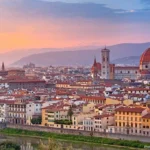
Western America is where the State of Montana is situated. Idaho, South Dakota, North Dakota, and Wyoming are its neighboring states. The Canadian provinces of Saskatchewan, Alberta, and British Columbia share a border with Montana as well. With 147,040 square miles, it is the fourth-largest state in the US. With approximately 1,005,141 residents, Montana is the 44th most populous state and the 48th most densely populated. Several Native American tribes, including the Crow, Cheyenne, Blackfeet, and Assiniboine, lived in Montana before it was discovered by European explorers and settled by the French. After many years of conflict for the area, Montana joined the Union in 1889 and became the country’s forty-first state.
Interesting facts about Montana:
The Spanish word for mountainous is where the name Montana comes from.
The Treasure State and Big Sky Country are the state moniker for Montana.
The state motto of Montana is “Oro y plata,” which translates to “gold and silver.”
“Montana” is the state anthem of Montana.
The largest city in Montana is Billings, and Helena is the state’s capital.
The state seal and the state’s landscape are depicted on the Montana state flag, which was formally adopted in 1905.
Montanans are the people who live in Montana.
The western meadowlark is the state bird of Montana.
The grizzly bear is the state animal and the cutthroat trout is the state fish of Montana.
The bitterroot and bluebunch wheatgrass are the state flowers and grasses of Montana, respectively.
The Ponderosa pine serves as Montana’s official tree.
The dinosaur with a duckbill, Maiasaura peeblesorum, serves as Montana’s state fossil. This was the first fossil from a dinosaur species to be sent into orbit.
In Montana, numerous dinosaur fossils have been discovered, including those of Ceratops, Stegoceras, Tyrannosaurus, and Albertosaurus.
The Yellowstone River, Missouri River, and Clark Fork River are some of Montana’s largest rivers.
Fort Peck Lake and Flathead Lake are two of Montana’s largest lakes.
56 counties, 7 state forests, and 50 state parks make up Montana.
The main crops grown in Montana are sugar beets, potatoes, wheat, barley, rye, oats, and flaxseed.
Cattle, sheep, mining, lumber, oil, and tourism make up the bulk of Montana’s major economic sectors.
The economy of Montana depends heavily on tourism, which offers activities like hunting, fishing, dude ranching, skiing, sight-seeing, hiking, and camping.
Montana is home to the largest herd of migratory elk in the United States.
With an average of 3.3 deer, 1.4 pronghorn antelope, and 1.4 elk per square mile of land, Montana’s wildlife population is healthy.
The Montana Yogo Sapphire is the only gem from North America to be displayed in the Crown Jewels of England.
More mammal species exist in Montana than any other state.
After the daughter of renowned Sioux Indian chief Sitting Bull, Ekalaka, Montana was established.
In the lower 48 states, Montana is home to the largest grizzly bear population.
In Moiese, Montana’s National Bison Range, you can still see wild buffalo.
In 1888, Helena, Montana, had more millionaires per capita than any other city in the entire world.
The first luge run in North America was constructed in 1965 and was located at Lola Hot Springs on Lola Pass.
Granit Peak, in Montana, has a height of 12,799 feet.
In the famous Little Bighorn Battle, which took place just south of Billings, Montana, Lt. Col. George Armstrong Custer and his soldiers made their final stand.










I’ve been following your blog for a while now, and I have to commend you on consistently delivering high-quality content. Your writing style is engaging and your topics are always thought-provoking. Keep up the fantastic work!